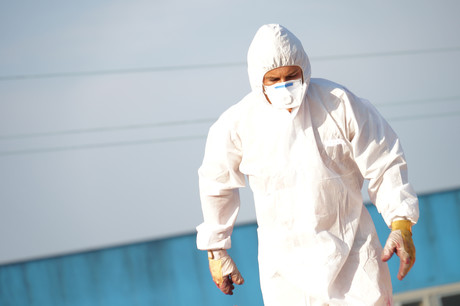Smart meter installations — asbestos and electrical safety

The Queensland Electrical Safety Office (ESO) is reminding electrical contractors of the safe work standards they’re expected and obliged to maintain during the installation of smart meters.
Persons conducting a business or undertaking (PCBUs) must ensure the work carried out must be electrically safe and must not compromise the safety of people or property. For smart meter installations, the following points must be kept in mind:
Work de-energised
• PCBUs must have systems in place to ensure the equipment is not energised during meter replacement or installation, including isolation and lockout.
• PCBUs must ensure the equipment is tested to determine whether or not it is energised before electrical work is carried out.
• Test for dead before you touch must be applied at all times.
Testing
• Workers must test appropriately when installing the meter and should record the tests.
• Testing equipment must be suitable for testing and fault finding.
• Testing equipment must itself be properly tested and in good working order.
Licensing and training
• Workers must have an electrical mechanics licence.
• Workers must be appropriately trained and competent in meter replacement work.
This list is by no means exhaustive. PCBUs must ensure all risks are managed for their electrical workers replacing or installing smart meters. If in doubt, the Electrical Safety Act 2002 s.30 and 39 list the duties of care for both a person conducting a business or undertaking (PCBU) and a worker. In addition, the Electrical Safety Code of Practice 2013 - Managing electrical risks in the workplace is a practical guide to achieving the electrical safety standards required.
Separately, concerns about asbestos in meter boxes, in particular the meter backing board/switch board, have also been flagged and PCBUs should ensure all electrical workers replacing or installing smart meters are aware of how to identify and work safely with these materials, according to Queensland ESO.
It can be difficult to identify asbestos materials by sight, but there are some common uses of asbestos in electrical equipment which are easy to spot. The only way to be certain is to have a sample of the material analysed by a laboratory. However, if the building was built before 1990 and has never had its switchboard replaced, it’s very likely the backboard will contain asbestos.
Property owners should be asked about the age of the building when the job is booked, but if workers have any doubt on the day, they must assume the backboard contains asbestos and take adequate precautions before work starts:
- Explain to the property owner and anyone there on the day why asbestos risk control measures will be used.
- Use barricades and signs to identify and restrict access to the work area.
- Wear a half face P2 respirator (worker must be clean shaven) and disposable gloves.
- Put plastic drops sheets under the meter box.
- Once de-energised and tested, vacuum (using an H-class industrial vacuum, not a household vacuum) or use a wet wipe/s inside the switchbox, panel and electrical equipment to remove dust and debris before and after the work is done.
- Use a vacuum drill attachment when drilling into the switchboard.
- If a vacuum attachment can’t be used, apply petroleum jelly (or similar thickened substance) and tape on both sides of drill hole.
- Use a low-speed battery drill.
- Use wet wipe/s or an H-class industrial vacuum to remove any dust and debris from the drilling.
- The vacuum, hose and attachments must be cleaned using wet wipes.
- Wipe all tools with wet wipes.
- Double-bag all asbestos waste, including disposable PPE, wet wipes, gloves, disposable respirator and plastic sheeting and seal with tape.
- Do not remove respirators until all waste is bagged and sealed and clean-up is complete.
- Ensure all bagged asbestos waste is secured on work vehicles where it will not be damaged or punctured or fall from the vehicle.
- Dispose of bagged waste as soon as possible in an asbestos waste bin or at an authorised asbestos disposal location.
This advice is for guidance only. For a comprehensive recommended safe work procedure, please refer to the How to manage and control asbestos in the workplace code of practice: Appendix F.
How power and control cables form the backbone of industrial automation
In this article, cable company LAPP explores the various characteristics and applications of...
Exploring the link between extreme weather and major power outages
Understanding the relationship between severe weather and power outages is crucial for developing...
The challenge of building portable switchrooms
Switchrooms must comply with a range of safety standards — something that is further...




